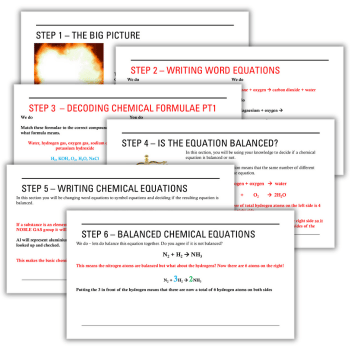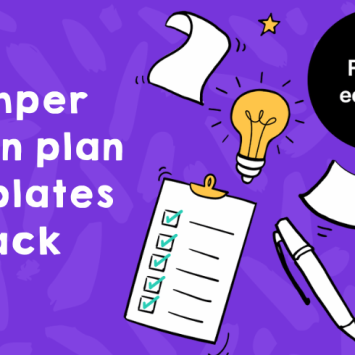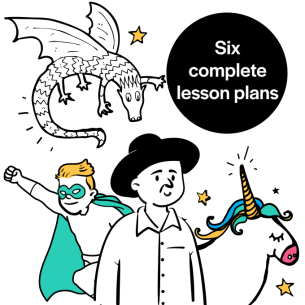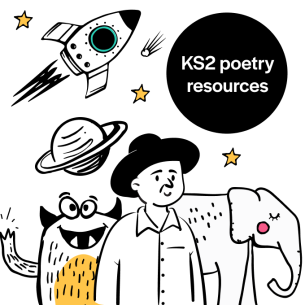43-page presentation (PDF and PowerPoint)
KS4
Years 10-11
Before handing out the balancing equations worksheets, use this extensive PowerPoint from science teacher Daniel Harvey to effectively teach students how to balance chemical equations…
Think of all the chemistry topics science teachers love to teach. The list may well include practical experiments that involve making salts, testing the reactivity of metals or demonstrating displacement. Or investigating how the speed of chemical reactions can be changed, or the reactivity of group 1 metals.
It’s unlikely that the teaching of chemical equations will be near the top of that list, or even on it at all. Yet the importance of this topic for mastering chemistry at GCSE and A Level can’t be understated. It’s the topic that enables more interesting areas to flourish and grab students’ attention.
It’s important to bear in mind the ways in which your teaching of equations will link to students’ future studies.
This is a topic that’s critical for the chemical calculation tasks students are assessed on in GCSE combined science – and indeed one that’s essential for any tasks that will involve applying molar calculations.
Balancing equations download
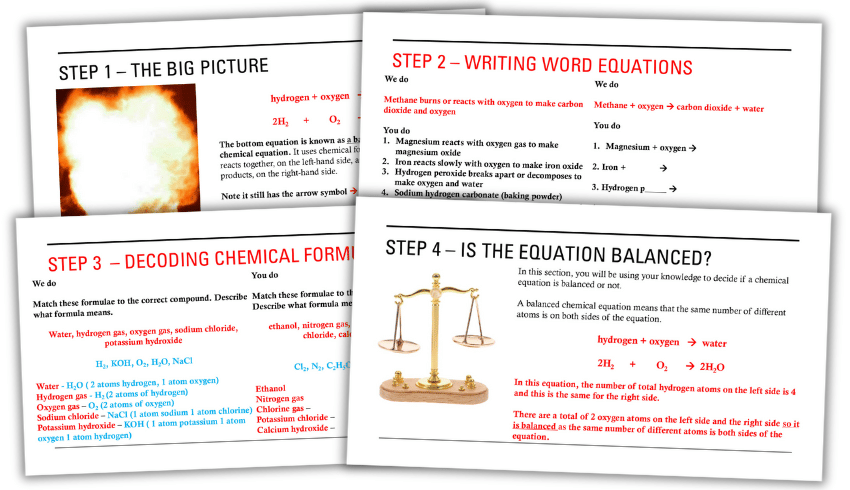
Download a free resource that breaks the teaching of this concept down into six discrete stages. The resource isn’t exhaustive, but you can add to it. After all, you know your students well, and will understand when to extend a particular stage, or increase the amount of challenge in practice questions.
Six stages of teaching chemical equations
The following six stages shouldn’t be mapped to six different lessons, but instead seen as progression points. They describe what students should know, in sequence, so that they can consistently write correct balanced symbol equations.
The resource starts with a knowledge organiser. This is so that students can learn the shared science vocabulary they’ll be using in later years, and the processes they will be expected to use in their work.
Stage 1
This is all about setting the scene using powerful demonstrations, such as hydrogen balloons and thermite reactions. This will grab students’ attention and help them apply these to the theory.
This initial stage should refer to the knowledge organiser, key terms and principles of equations. It will be mainly teacher-led. It can include the use of more examples so that students can fully grasp these basics.
Stage 2
This emphasises how balanced chemical or symbol equations need to be preceded by word equations. At this stage, we want to focus on getting students to write word equations from reaction descriptions.
You can then assess how much practice students need from five questions presented within the resource.
Stage 3
This sees students use the periodic table to decode and describe chemical formulae (assuming you haven’t already covered this).
Assess how well your group can apply this learning, and then extend the amount of practice if needed. The resource includes an example with brackets, intended to make you think about when to introduce these formulas to student learning and practice. It also extends the idea of putting numbers before formulae.
Stage 4
This involves learning how to identify what a balanced symbol equation is, and developing the ability to justify decisions.
Stage 5/6
This is one stage split into two, so that students can first practise matching chemical formulae to substance names and when to use the appropriate symbols.
Some groups might not need this, while others might need to take their time over it. Identifying if an equation is balanced, and knowing how to correctly balance it if not, then becomes the focus of the final stage.
Listen to how well students solve the problems you present to them, and then decide if and how best to extend the challenge.
Daniel Harvey is a GCSE and A Level science teacher and lead on behaviour, pastoral and school culture at an inner city academy.
